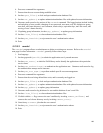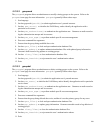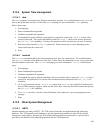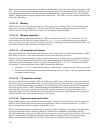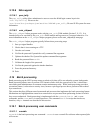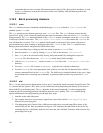
To test CPU control registers, use MOVL %cs, 28(%esp). This overwrites the value of the register that
contains the code segment. The register that contains the address of the next instruction (eip) is not directly
addressable. Note that in the Intel documentation of MOV it is explicitly stated that MOV cannot be used to set
the CS register. Attempting to do so will cause an exception (SIGILL rather than SIGSEGV).
The expected outcome of attempting to execute these instructions is a segmentation violation signal
(SIGSEGV – 11).
5.13.5.1.5.4 eServer 326
Chapter 4 of the AMD Architecture Programmer’s Manual Volume 3: General Purpose and System instructions
at http://www.amd.com/us-en/assets/content_type/white_papers_and_tech_docs/24594.pdf gives the list of
privileged instructions available for the AMD64 architecture.
This tool tests the following privileged instructions:
• HLT: Halt the processor
• RDPMC: Read performance-monitoring counter
• CLTS: Clear task-switched flag in register CR0.
• LIDT: Load Interrupt Descriptor Table Register
• LGDT: Load Global Descriptor Table Register
• LTR: Load Task Register
• LLDT: Load Local Descriptor Table Register
To test CPU control registers, use MOVL %cs, 28(%esp). This overwrites the value of the register that
contains the code segment. The register that contains the address of the next instruction (eip) is not directly
addressable. MOV cannot be used to set the CS register. Attempting to do so will cause an exception
(SIGILL rather than SIGSEGV).
The expected outcome of attempting to execute these instructions is a Segmentation Violation signal
(SIGSEGV – 11).
5.13.5.1.6 AMTU output
For each of these subsystems, the AMTU tool reports what aspect of the system it is currently testing and then
reports either success or failure. This message is also logged to the audit subsystem. In the case of failure, any
additional information available is reported to the system administrator to help troubleshoot the problem.
5.13.5.2 star
The star utility is an extended version of the tape archive command. It can save and restore the extended
attributes the ext3 filesystem uses to store ACLs. For more information on the star utility, see the star(1) man
page.
The star utility typically follows these processing steps:
1. Saves the command line arguments.
206




